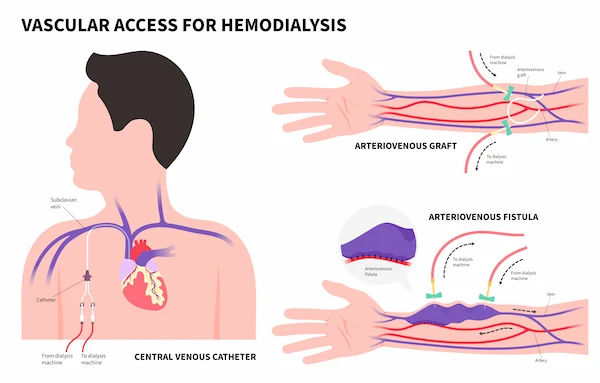Guide to Blood Donation Eligibility And Benefits
Donating blood saves lives. Learn about the crucial blood donation eligibility requirements, who can donate, and the amazing health benefits you receive in return. Find a blood drive near you!

Written by Dr. Siri Nallapu
Reviewed by Dr. Rohinipriyanka Pondugula MBBS
Last updated on 29th Oct, 2025

Introduction
Thinking about donating blood but not sure if you’re eligible—or what really happens when you do? You’re not alone. Every day, people search for clear, trustworthy answers about blood donation eligibility, how often you can give, and the real benefits to your health and community. This guide is your one-stop resource. We’ll explain who can donate, what the criteria mean in plain language, how to prepare, and what to expect before, during, and after your donation. We’ll also cover lifestyle and travel considerations, common myths, and why your donation matters more than you think.
If you’re looking for practical advice with the science to back it up, you’re in the right place. You’ll find evidence-based tips, real-world eligibility examples, and expert insights from globally recognized authorities in blood services. Whether you’re a first-time donor or getting back into the habit, this comprehensive guide will help you donate safely, confidently, and with maximum impact. Along the way, we’ll naturally address key questions about blood donation eligibility, so you can decide when and how to take that generous step.
Why Donating Blood Matters?
Blood donation underpins modern healthcare. A single whole blood donation can help multiple patients because it’s often separated into red cells, plasma, and platelets, each serving different needs. Trauma and surgery often require red cells; cancer and transplant patients frequently need platelet transfusions; burn victims and those with clotting disorders benefit from plasma. In many regions, platelets expire after just 5–7 days, which means consistent donation is essential to prevent shortages.
Globally, WHO estimates that tens of millions of units are donated each year, but availability is uneven—low- and middle-income countries often face shortages, and even in high-income nations, seasonal dips (holidays, flu season) can strain supplies. In the US, organizations like the American Red Cross report periodic urgent or critical shortages, especially of O-negative “universal donor” red cells and AB plasma. In the UK, NHS Blood and Transplant highlights variable demand, with some blood groups and rare phenotypes critically needed.
Unique insight: Think “portfolio of donations.” If your schedule allows, alternate between whole blood and platelets, or consider a double red cell donation if you meet criteria. This makes your donor profile more resilient to shifting hospital needs. And if you have a rare blood type or a specific antigen profile, joining a rare donor registry exponentially increases your impact.
In short, your blood donation is an immediate, local lifesaving act with global ripple effects. Even one first-time donor can set off a chain—family and friends often follow your lead.
Consult a Top General Physician
Core Eligibility Checklist: Are You Ready to Donate?
Eligibility is about ensuring safety for both you and the recipient. While exact rules vary by country and blood service, expect a donor eligibility questionnaire and a brief health check.
Age, weight, and vital signs:
• Age: In many regions, 17+ can donate (16 with parental consent in some US states). In India, the usual age range is 18–65 years.
• Minimum weight: Typically 50 kg (110 lb) in the US; 45 kg is commonly cited in India for whole blood.
• Vital signs: Normal temperature, pulse, and blood pressure at the time of donation are required.
Hemoglobin and general health:
• Hemoglobin: Most services require a minimum hemoglobin around 12.5 g/dL, measured on the day of donation.
• General health: You should feel well, with no active infection. Acute illness (fever, flu) usually leads to a temporary deferral until you fully recover.
Country-specific differences (examples):
• US (Red Cross): Whole blood every 56 days; minimum weight 110 lb; broad adoption of behavior-based screening (IDA).
• UK (NHS): Men can often donate every 12 weeks; women every 16 weeks; robust
guidance for medications and travel.
• India (NACO/NBTC): Minimum age 18; minimum weight 45 kg; typical interval around 3 months for whole blood; detailed deferral lists for infections and conditions.
Tip: If your hemoglobin is borderline or you’re a frequent donor, consider checking ferritin (iron stores) occasionally. Apollo24|7 offers a convenient home collection for tests like CBC and ferritin, which can help you plan a safe donation routine.
Medical Conditions and Medications
Many common conditions are compatible with blood donation, provided they are well-controlled and you feel well on donation day.
Chronic conditions:
• Hypertension: Often acceptable if controlled and you’re not experiencing symptoms;
some medications are fine.
• Diabetes: Usually acceptable if well controlled (diet, oral medications). Insulin use can be acceptable in some countries; check your local blood service.
• Asthma and allergies: Generally acceptable if you’re symptom-free and not having an acute exacerbation.
• Thyroid disease: Often acceptable if stable on medication.
Medications:
• Antibiotics: If taking antibiotics for an active infection, you’ll usually be deferred until the course is completed and you are symptom-free.
• Blood thinners (e.g., warfarin, some newer anticoagulants): Usually defer you from donating blood or certain components due to bleeding risk.
• Acne meds (isotretinoin), finasteride, dutasteride: Temporary deferrals due to teratogenic risk for recipients in some contexts.
• Cancer history: Active cancer generally excludes donation; some past cancers (e.g., certain skin cancers) may be acceptable after treatment and waiting periods.
Unique insight: Bring a medication list or take a photo of your prescriptions before you go. This speeds up screening and helps the staff make accurate eligibility decisions. If you’re unsure, call your local blood center beforehand and ask about your specific medication and condition.
Travel, Vaccines, and Infections
Travel-related deferrals are designed to minimize transfusion-transmitted infections.
Malaria risk travel:
• If you traveled to malaria-endemic regions, you may face a deferral period. In the US, the FDA shortened some malaria-related deferrals to 3 months in recent years, but policies can vary and may change; always check the current rules with your blood center. The UK and India also apply travel-based deferrals depending on destination and duration.
COVID-19:
• After a COVID-19 infection, many services allow donation once you’re fully recovered and symptom-free for a defined period (often at least 10 days); local policies vary.
• COVID-19 vaccines: Most currently authorized COVID-19 vaccines are non-live, with no deferral required if you are well. Always report the vaccine type and date to staff.
Other infections/exposures:
• Hepatitis, syphilis, HIV exposures, and certain high-risk medical procedures may lead to temporary or permanent deferral depending on local policy.
• Zika, Chikungunya, West Nile virus: Regional and seasonal deferrals may apply.
Unique insight:
If you travel frequently, keep a “donor passport”—a simple note on your phone listing countries visited with dates. This helps staff quickly determine any temporary deferrals and plan your next eligible date.
Lifestyle Factors: Tattoos, Piercings, Sexual Behavior, Alcohol
Updated behavior-based screening (IDA):
• In 2023, the US FDA transitioned to an individual, behavior-based donor assessment that asks the same questions of all potential donors, regardless of gender or sexual orientation, focusing on specific recent risk behaviors. Many services worldwide are moving toward similar, evidence-based approaches.
Tattoos and piercings:
• Tattoos/piercings from state- or nationally regulated facilities that use sterile needles and single-use ink may have no deferral in some countries. Otherwise, a short deferral (commonly around 3 months) may apply.
• Bring information about where and when you got your tattoo/piercing.
Alcohol and sleep:
• Avoid alcohol for at least 24 hours before donating and ensure you’re well-rested and hydrated. A light, iron-rich meal beforehand helps stabilize your blood sugar and reduces fainting risk.
Unique insight:
If you’re planning a tattoo or piercing, time it with your donation schedule. Donating first, then having your tattoo done in a regulated studio, can keep you eligible more consistently.
Types of Donation and How Often You Can Give
Understanding donation types helps you tailor your impact.
Whole blood:
• The most common type takes about 8–10 minutes of draw time. In the US, you can donate every 56 days; in India, roughly every 3 months; in the UK, 12 weeks for men and 16 weeks for women.
Platelets (apheresis):
• Crucial for cancer, transplant, and trauma patients. In the US, you may be able to donate platelets every 7 days, up to 24 times per year, depending on the center.
• Platelet donation eligibility often includes additional criteria (e.g., aspirin use defers platelet donation for a few days).
Plasma:
• Used for clotting disorders and other conditions. Frequency varies (e.g., every 28 days in some services).
Double red cells:
• Collects two units of red cells in one session using apheresis. Typically available to donors with specific height/weight and hemoglobin criteria. Interval is generally longer (e.g., every 112 days in the US).
Unique insight: Strategic scheduling can reduce iron loss. If you’re prone to low iron, consider alternating whole blood with platelet or plasma donation, or choose less frequent double red donations with iron support. Ask your center about a personalized plan.
Preparing for Your First Donation
A little preparation goes a long way toward a smooth experience.
Hydration and food:
• Drink 500–700 ml of water in the 1–2 hours before your appointment.
• Eat a balanced, iron-rich meal (e.g., beans, leafy greens, eggs, lean meats) with vitamin C to aid absorption.
• Avoid high-fat meals immediately before donation; they can interfere with some tests.
Clothing and documents:
• Wear sleeves that roll up easily. Bring a photo ID and your medication list.
Anxiety and fainting prevention:
• Feeling nervous is normal. Practice slow, deep breathing. During the draw, engage your calf muscles, cross and squeeze your legs gently, or perform hand-squeeze exercises to maintain blood pressure and reduce fainting risk.
• Sleep: Aim for a full night’s rest before your donation.
What to Expect on Donation Day?
The process is streamlined and designed for safety.
Registration and mini health check:
• You’ll complete a blood donor eligibility questionnaire covering travel, medications, and health history.
• Staff will check your temperature, pulse, blood pressure, and hemoglobin.
The donation:
• For whole blood, a sterile, single-use needle is used, and the draw typically takes 8–10 minutes. The entire visit lasts about an hour.
• For apheresis (platelets, plasma, double red), expect 60–120 minutes depending on the procedure.
Safety and quality:
• Supplies are sterile and single-use; there’s no risk of getting infections like HIV from donating.
• Your donation is tested for infectious markers according to national standards before being released for patient use.
Aftercare on-site:
• You’ll be asked to rest briefly and enjoy a snack and drink to stabilize your blood sugar and hydration.
Recovery, Side Effects, and Iron Management
Most donors feel fine afterward, but mild side effects can occur.
Common reactions:
• Lightheadedness, fatigue, and bruising at the needle site. These usually resolve with rest, fluids, and a snack.
• To reduce bruising, keep the bandage on per instructions, avoid heavy lifting with the donation arm for the rest of the day, and apply a cold compress if needed.
Iron and ferritin:
• Each whole blood donation removes about 200–250 mg of iron. Frequent donors—especially menstruating women and teens—can develop low ferritin (iron stores) even with normal hemoglobin.
• AABB recommends that blood centers consider ferritin testing or offering low-dose iron supplementation to frequent donors to prevent iron deficiency.
Practical plan:
• Discuss an iron-rich diet and possibly taking 18–38 mg of elemental iron daily for 8 weeks after whole blood donation if you donate frequently, unless your doctor advises otherwise.
• If you experience persistent fatigue, palpitations, or hair loss after repeated donations, consider a ferritin test. Apollo24|7 offers home collection for CBC and ferritin that can guide safe donation intervals and iron support.
Unique insight:
Build your “iron window.” If you donate whole blood, pencil in a 6–8 week iron-repletion window with diet and, if appropriate, supplements and time your next donation after your ferritin has recovered.
Special Situations and Populations
First-time donors and teens:
• Teens may be eligible in some regions (e.g., 16–17 with consent in parts of the US). Adequate hydration and a good meal are especially important to reduce fainting risk.
Women donors:
• Menstruation: You can donate if you feel well and meet hemoglobin criteria.
• Pregnancy: Donation is not allowed during pregnancy. Many services recommend waiting until at least 6 weeks postpartum and until breastfeeding is well established and you feel fully recovered.
• Iron: Women of reproductive age should be especially mindful of iron management between donations.
Older adults:
• There’s often no upper age limit if you’re healthy and pass screening. Many seniors donate regularly; controlled conditions like hypertension or diabetes can be acceptable.
India-specific notes:
• In India, typical eligibility: age 18–65, minimum weight 45 kg, hemoglobin thresholds per local policy, general whole-blood interval around 3 months. Always confirm with your local blood bank.
Unique insight:
If you’ve been deferred before, don’t be discouraged. Most deferrals are temporary. Mark your “eligible after” date in your calendar and check in with the center when the time comes.
Finding a Blood Drive and Becoming a Regular Donor
How to book?
• Search your national service (e.g., American Red Cross “Find a Drive,” NHS Give Blood, or your city’s blood center). Many offer apps for booking, tracking donations, and reminders.
Becoming a regular donor:
• Set reminders aligned with your eligible date (e.g., 56 days after whole blood in the US).
• Consider donating during predictable shortage periods—summer holidays, flu season, and around year-end festivities.
Maximize community impact:
• Recruit a friend or form a workplace/school donation team.
• If you have a rare blood type, ask about phenotype testing and rare donor registries.
• Consider component donations (platelets/plasma) if you’re eligible; these often face acute shortages.
Unique insight:
Pair your donation habit with a personal ritual—a favorite café afterward or a short walk—so the routine sticks. Behavioral anchoring increases follow-through.
Myths vs Facts: Getting the Science Right
• Myth: You can catch diseases from donating. Fact: All equipment is sterile and single-use; donating blood does not transmit infections to you.
• Myth: Donating will make you severely weak. Fact: Most people feel fine within a day; hydration and a snack help. Heavy workouts can wait 24 hours.
• Myth: Tattoos always disqualify you. Fact: Tattoos from regulated facilities often don’t require a deferral; otherwise, there may be a short deferral (e.g., around 3 months).
• Myth: People with controlled chronic conditions can’t donate. Fact: Many can, if stable and symptom-free (e.g., controlled hypertension or diabetes).
• Myth: COVID-19 vaccines bar you from donating. Fact: Most authorized vaccines don’t require deferral if you’re well; disclose your vaccine type and date.
Conclusion
Blood donation is one of the simplest ways to save lives today. If you’re generally healthy and meet basic criteria for blood donation eligibility, your contribution can support trauma care, surgeries, cancer treatments, and more. Eligibility rules exist to protect you and recipients, and most deferrals are temporary. With a little preparation—hydration, an iron-smart meal, and a clear understanding of your travel, medication, and lifestyle considerations—you can donate safely and confidently.
Make a plan that works for you. Choose the donation type that fits your health and schedule; alternate components or align your appointments with high-demand seasons. If you donate often, be proactive about iron management and consider periodic ferritin checks. If you’ve had a recent tattoo, traveled to a malaria area, or started a new medication, talk with your local blood center—chances are, you’ll just need to wait a short period before giving again.
Consult a Top General Physician
Consult a Top General Physician

Dr. Dhanraj K
General Physician/ Internal Medicine Specialist
25 Years • MBBS, MD Internal Medicine - Osmania Medical College, Hyderabad
Hyderabad
Apollo Hospitals Jubilee Hills, Hyderabad
(400+ Patients)

Dr. Anand Ravi
General Physician
2 Years • MBBS
Bengaluru
PRESTIGE SHANTHINIKETAN - SOCIETY CLINIC, Bengaluru

Dr Syed Mateen Pasha
General Physician
2 Years • MBBS
Bengaluru
PRESTIGE SHANTHINIKETAN - SOCIETY CLINIC, Bengaluru

Dr. Harshendra Jaiswal
General Physician/ Internal Medicine Specialist
12 Years • MBBS , MD (General medicine)
Kolkata
108 DHANA DHANVANTARI Clinic, Kolkata
(25+ Patients)
Dr P Sai Avinash
General Physician/ Internal Medicine Specialist
5 Years • MBBS
Bengaluru
Apollo Medical Center, Marathahalli, Bengaluru
Consult a Top General Physician

Dr. Dhanraj K
General Physician/ Internal Medicine Specialist
25 Years • MBBS, MD Internal Medicine - Osmania Medical College, Hyderabad
Hyderabad
Apollo Hospitals Jubilee Hills, Hyderabad
(400+ Patients)

Dr. Anand Ravi
General Physician
2 Years • MBBS
Bengaluru
PRESTIGE SHANTHINIKETAN - SOCIETY CLINIC, Bengaluru

Dr Syed Mateen Pasha
General Physician
2 Years • MBBS
Bengaluru
PRESTIGE SHANTHINIKETAN - SOCIETY CLINIC, Bengaluru

Dr. Harshendra Jaiswal
General Physician/ Internal Medicine Specialist
12 Years • MBBS , MD (General medicine)
Kolkata
108 DHANA DHANVANTARI Clinic, Kolkata
(25+ Patients)
Dr P Sai Avinash
General Physician/ Internal Medicine Specialist
5 Years • MBBS
Bengaluru
Apollo Medical Center, Marathahalli, Bengaluru
More articles from General Medical Consultation
Frequently Asked Questions
1) How often can you donate blood?
.Whole blood: Typically every 56 days in the US; about every 12–16 weeks in the UK (men/women); around 3 months in India. Platelet donation eligibility often allows more frequent donations (e.g., every 7 days up to 24 times/year).
2) What are the blood donation hemoglobin requirements?
Most centers require a minimum hemoglobin around 12.5 g/dL measured on donation day. If you’re borderline, focus on iron-rich foods and consider discussing iron supplements or ferritin testing.
3) Can I donate blood after a tattoo or piercing?
Yes, if done in a regulated facility that uses sterile, single-use equipment, many services allow no deferral. Otherwise, a short deferral (often around 3 months) may apply. Confirm with your local center.
4) Which medications prevent blood donation?
Antibiotics for an active infection, blood thinners, and certain medications (e.g., isotretinoin, finasteride/dutasteride) can lead to temporary deferrals. Always share your medication list during the blood donor eligibility questionnaire.
5) What if I feel faint or tired after donating?
.Lightheadedness can occur. Rest, hydrate, and eat a snack. Avoid strenuous exercise for 24 hours. If symptoms persist beyond two days, consult a doctor. If you donate frequently and feel persistently fatigued, consider iron studies; Apollo24|7 offers home collections for CBC and ferritin.




